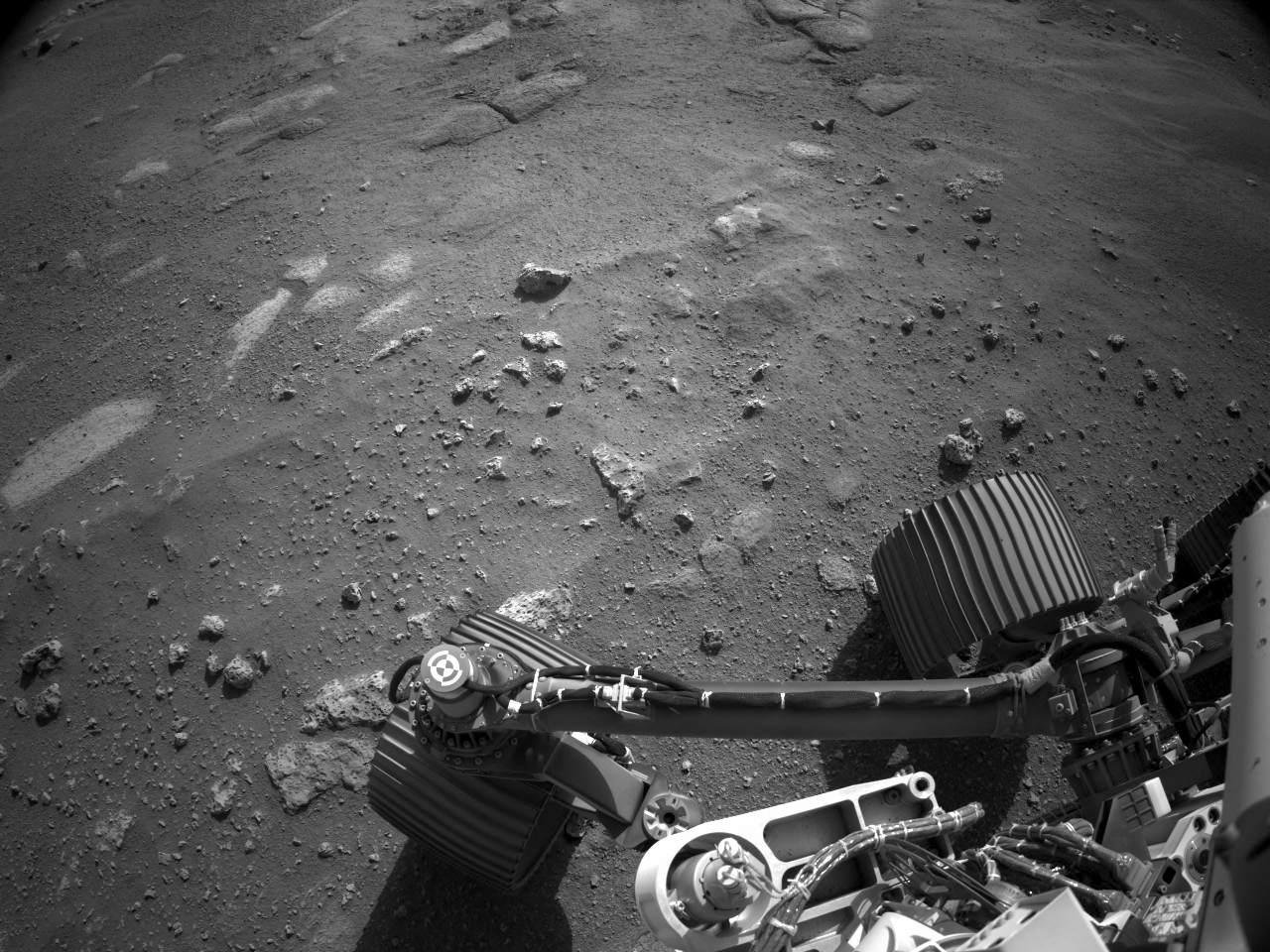
These sounds are truly otherworldly.
NASA's Perseverance rover recorded 60 seconds of Martian sound on Saturday (Feb. 20), just two days after its picture-perfect touchdown inside Jezero Crater. The newly released file, which features mechanical whirring from the rover and the rustle of a Red Planet breeze, is the first true audio ever captured on the surface of Mars.
"Really neat — overwhelming, if you will," Dave Gruel, of NASA's Jet Propulsion Laboratory (JPL) in Southern California, said during a news conference on Monday (Feb. 22). The audio was unveiled during that briefing, as was jaw-dropping video Perseverance captured during its Feb. 18 entry, descent and landing (EDL).
Epic video: Watch the Perseverance rover land on Mars
Live updates: NASA's Perseverance Mars rover mission
Gruel is in charge of Perseverance's EDL camera system, which includes an off-the-shelf commercial mic built by Danish company DPA Microphones. That instrument was supposed to capture sound during the rover's "seven minutes of terror" touchdown but did not do so, for reasons that Gruel and his colleagues are investigating. The microphone came to life soon enough, however, recording the historic sound snippet on Saturday.
Perseverance, the heart of NASA's $2.7 billion Mars 2020 mission, carries a second mic as well — one built into its rock-zapping SuperCam instrument.
SuperCam is not up and running yet; the team is still performing health checks on Perseverance's instruments and subsystems. Once SuperCam comes online, the microphone will help the mission team characterize target rocks, revealing how hard they are and whether they have a thin coating. The mic could also capture a variety of other sounds as well, such as Martian breezes and the crunch of dirt beneath Perseverance's wheels.
Get the Space.com Newsletter
Breaking space news, the latest updates on rocket launches, skywatching events and more!
Perseverance may be able to record stereo sound on Mars at some point, by using the EDL and SuperCam mics in concert. There are no guarantees, however; the EDL mic was not optimized for use on the harsh, frigid Martian surface, so it's unclear how long it will last, Gruel told Space.com last week.
Mars 2020 is an ambitious mission that will advance Red Planet exploration in a variety of ways, if all goes according to plan. For example, Perseverance will hunt for signs of ancient Mars life on the floor of Jezero, which hosted a lake and a river delta billions of years ago. The rover will also collect and cache dozens of samples, which a joint NASA-European Space Agency campaign will return to Earth, perhaps as early as 2031.
The mission also carries several tech demonstrations. One, an instrument called MOXIE ("Mars Oxygen In-Situ Resource Utilization Experiment"), is designed to generate oxygen from the thin, carbon dioxide-dominated Martian atmosphere. Another is the Mars Helicopter Ingenuity, which aims to become the first rotorcraft ever to fly on a world beyond Earth.
Ingenuity's test campaign will be the first big activity that the mission team undertakes after getting Perseverance up and running. The 4-lb. (1.8 kilograms) chopper's flights are expected to take place this spring, and one or both of the microphones might record the history-making sorties.
High-frequency sounds attenuate very quickly in Mars' atmosphere, which is just 1% as dense as Earth's. But the mics might be able to pick up some low-pitched rotor wash, mission team members have told Space.com.
Such audio will have value beyond the scientific insights they provide, helping to bring the Red Planet closer for all of us, Gruel said.
During Monday's news conference, he told a story about a conversation he had several years ago while giving a tour of JPL. One of the tour participants was particularly excited about Perseverance's planned microphones. Gruel asked why, and she replied that her sister is visually impaired and therefore can't get the same enjoyment and inspiration from Mars rover photos that most of us take for granted.
"And that stuck with me," Gruel said.
"I wish that I had actually captured that individual's name," he added. "I would love to reach out to her now and say, 'We've done it. I hope your sister is enjoying it.'"
While the newly released recording showcases the first true Martian audio, it's not the first sound of any type captured on the Red Planet. NASA's InSight lander "heard" the Martian wind shortly after its November 2018 touchdown, after processing data gathered by an air pressure sensor and a seismometer.
This story was updated at 9:15 p.m. EST on Feb. 23 to state that Perseverance's recording is the first true audio ever collected on Mars. The original version stated that it was the first true audio ever recorded on a planet beyond Earth. That's not the case; the Soviet Union's Venera 13 and Venera 14 probes recorded audio on Venus in 1982.
Mike Wall is the author of "Out There" (Grand Central Publishing, 2018; illustrated by Karl Tate), a book about the search for alien life. Follow him on Twitter @michaeldwall. Follow us on Twitter @Spacedotcom or Facebook.
Join our Space Forums to keep talking space on the latest missions, night sky and more! And if you have a news tip, correction or comment, let us know at: community@space.com.

Michael Wall is a Senior Space Writer with Space.com and joined the team in 2010. He primarily covers exoplanets, spaceflight and military space, but has been known to dabble in the space art beat. His book about the search for alien life, "Out There," was published on Nov. 13, 2018. Before becoming a science writer, Michael worked as a herpetologist and wildlife biologist. He has a Ph.D. in evolutionary biology from the University of Sydney, Australia, a bachelor's degree from the University of Arizona, and a graduate certificate in science writing from the University of California, Santa Cruz. To find out what his latest project is, you can follow Michael on Twitter.









